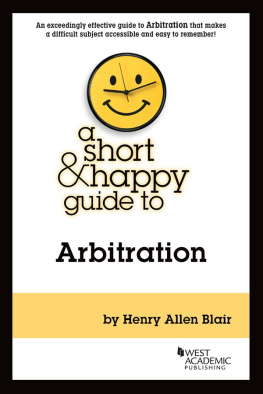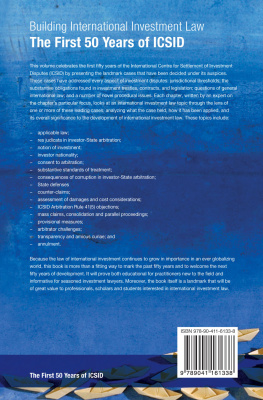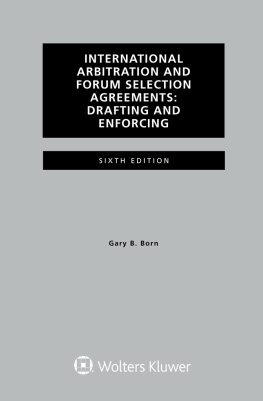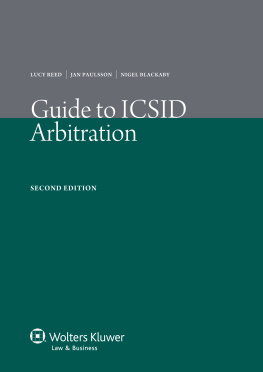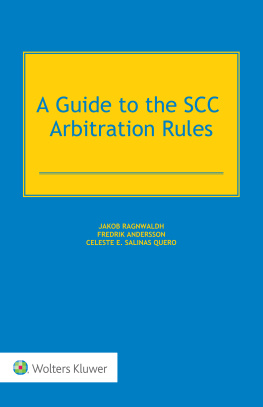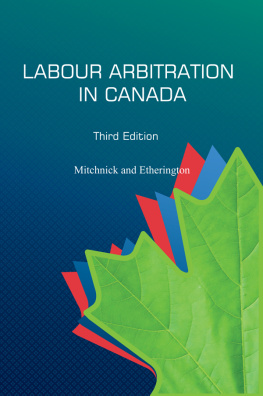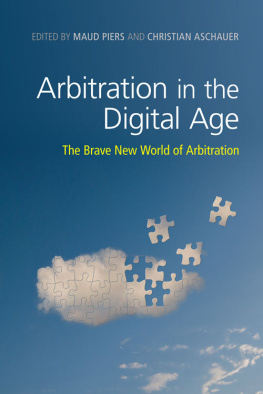West Academic Publishings Law School Advisory Board
Jesse H. Choper
Professor of Law and Dean Emeritus
University of California, Berkeley
Joshua Dressler
Distinguished University Professor Emeritus,
Frank R. Strong Chair in Law
Michael E. Moritz College of Law, The Ohio State University
Yale Kamisar
Professor of Law Emeritus, University of San Diego
Professor of Law Emeritus, University of Michigan
Mary Kay Kane
Professor of Law, Chancellor and Dean Emeritus
University of California, Hastings College of the Law
Larry D. Kramer
President, William and Flora Hewlett Foundation
Jonathan R. Macey
Professor of Law, Yale Law School
Arthur R. Miller
University Professor, New York University
Formerly Bruce Bromley Professor of Law, Harvard University
Grant S. Nelson
Professor of Law Emeritus, Pepperdine University
Professor of Law Emeritus, University of California, Los Angeles
A. Benjamin Spencer
Justice Thurgood Marshall Distinguished Professor of Law
University of Virginia School of Law
James J. White
Robert A. Sullivan Professor of Law Emeritus
University of Michigan

Arbitration
Henry Allen Blair
Robins Kaplan Distinguished Professor of Law
Senior Fellow, Dispute Resolution Institute
Mitchell Hamline School of Law
A SHORT & HAPPY GUIDE SERIES

The publisher is not engaged in rendering legal or other professional advice, and this publication is not a substitute for the advice of an attorney. If you require legal or other expert advice, you should seek the services of a competent attorney or other professional.
a short & happy guide series is a trademark registered in the U.S. Patent and Trademark Office.
2019 LEG, Inc. d/b/a West Academic
444 Cedar Street, Suite 700
St. Paul, MN 55101
1-877-888-1330
Printed in the United States of America
ISBN: 978-1-64242-295-5
To Amanda Eiko Lindseth, my sun, my moon, and all my stars.
Acknowledgments
There are far too many people to thank. Its inevitable that Ill leave someone essential out. So, Ill start by thanking everyoneyou know who you arewho doesnt otherwise make it on this list.
First of all, my editor, Jon Harkness, made all this possible. Despite once upon a time having been a student of mine, he was generous enough to nevertheless help me get this project (and a bunch of others) off the ground, and I owe him an unpayable debt for it. Along those same lines, Im giving a shout out to Louis Higgins and all of the wonderful staff and editors at West Academic. And, of course, I need to thank Paula Franzese who started the Short and Happy series.
I also need to thank to my mentor, friend, and co-author Thomas Carbonneau, without whom I would have never become interested in arbitration. And Kitty Atkins, without whom I would have never met Tom or gotten started in the dispute resolution field. Similarly, I need to thank a bunch of brilliant teachers, mentors, and colleagues who inspire and challenge me to keep learning: Loukas Mistelis, Robert Scott, Victor Goldberg, Anita Terry, Hon. Paul Magnuson, Hon. Jeffrey Bryan, Clifford Greene, Ania Farren, Marie Failinger, David Larson, Sharon Press, Carol Swanson, Steve Swanson, Jennifer Blair, Matt Vadnais, Liz Kramer, and Amanda Lindseth.
I owe a special thanks to my students, and particularly my arbitration students, who make teaching and writing so incredibly rewarding. And, in particular, I give a huge thanks to my research assistant, Beau RaRa, for making this book better.
Finally, but far from lastly, I would like to thank my family and friends, and in particular, Jillayne Berg, Ted Lindseth, and Frances Lindseth.
Table of Contents
D. Pro: Privacy/Confidentiality (Though This Could
Be a Big Con Too) 36
G. Pro: Class Action Waiver (Well, a Pro for
Businesses, at Least) 39
A. Con: Lack of Error Correction in High-Stakes
Cases (No Appeals) 40
B. Con: Risk of Split-the-Difference Awards
(Maybe?) 41
Chapter 3. Five Core Concepts at the Heart of
Arbitration
C. Sections 3 and 4 of the FAA: Remedies for Breach
of Arbitration Contracts 75
E. Sections 9, 10, and 11: Limited Judicial
Oversight 78
To Go to Arbitration or Not to Go to Arbitration,
Thats the Question 101
A. Who Decides if the Dispute Is Arbitrable?
(Conflict 3) 102
a) Flaws in the Agreement and Scope of
the Agreement 104
b) Defenses Enforcement or Excuses for
Non-Performance 110
The Preclusive Effect of Enforceable Arbitral
Awards 118
Chapter 8. Is Arbitration Fair?: Consumers, Employees,
and Other Disparate Parties
A Primer on a Few Key Public Policy Issues
Surrounding Disparate Party Arbitration 139
B. Concerns About the Fairness of the Arbitral
Process Itself 145
C. The Review and Enforcement of Arbitral
Awards 163
B. Are There Any Grounds for Non-Enforcement of
the Award? 165
B. A Dispute Between Contracting State and a
National of a Different Contracting State 172
A Short & Happy Guide to Arbitration

First Impressions and Introductions
Youre interested in arbitration? Excellent! So am I!
In fact, I love teaching, writing, and thinking about arbitration, so I want to thank you for picking up this Short and Happy Guide.
Maybe youre a student taking a course related to arbitration, and youre looking for an edge to master the materials. Perhaps youre a lawyer who never took such a course, but you are now facing your first arbitration issue in practice. Maybe youre a business person or a business-mined person who realizes how foundational arbitration is to civil dispute resolution and you want to learn more. Or you might simply be a concerned citizen interested in the many commitments you have, even if you didnt understand you were making them, to arbitrate future disputes with your employer, cell phone provider, or supplier of just about every other consumer good you own or service you receive.
Whatever path has brought you to the subject, over the next 176 pages, Im going to give you a conceptual map that will help guide you through the law, theory, and practice of arbitration.
Like all Short and Happy guides, this one doesnt cover every nuance or detail of the law. Arbitration can be bewildering because it involves a concoction of contract law, civil procedure, and constitutional law. Its one of those subjects that has equal parts fiddly doctrinal detail and big-picture policy. Thats where this Guide comes in handy. It will not only orient you to the basic doctrine, but it will also give you the organization and tools you need to think through many arbitration problems.
In terms of scope, our primary focus will be the United States domestic law of arbitration, though Chapter 9 will introduce international commercial and state-investor arbitration, and I will reference, occasionally, the ways in which U.S. arbitration law is similar to or different from the domestic arbitration laws of other countries.
So, thats it for preliminaries. Without further ado, lets get this party started!


